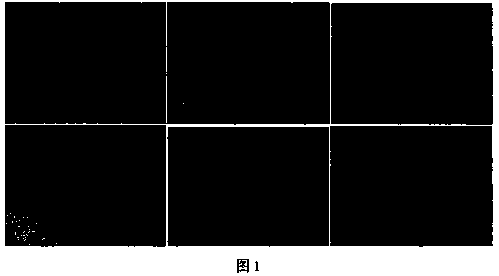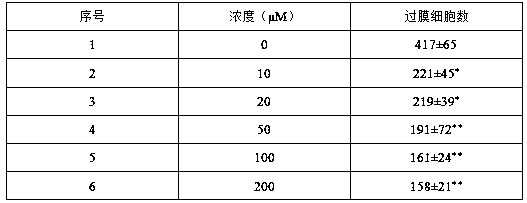Application of juglone in treatment of human liver cancer
A technology of jugone and liver cancer, applied in the field of jugone in the treatment of human liver cancer, can solve the problems of poor clinical treatment effect, large side effects, hidden onset, etc., and achieve the effects of improving biological efficacy, preventing oxidative degradation, and accelerating the dissolution rate.
- Summary
- Abstract
- Description
- Claims
- Application Information
AI Technical Summary
Problems solved by technology
Method used
Image
Examples
Embodiment 1
[0026] The preparation steps of juglone include: pretreatment, leaching, and purification, specifically including the following steps:
[0027]Pretreatment: pick walnuts after they are ripe, select smooth, healthy and uniform green walnut peels, dry them at 50°C for later use, grind them with a traditional Chinese medicine grinder, and pass through a 100-mesh sieve to obtain dry walnut green peels; according to the ratio of material to liquid 1:8 The ratio is mixed evenly with isopropanol. In isopropanol, 3.2% n-butanol and 0.45‰ of 4-benzyl-2-oxazolone are pre-dissolved, and 4-benzyl-2-oxazolone contains 5% The (R)-4-benzyl-2-oxazolone was reacted at 31°C for 3 hours, filtered, centrifuged at 5000r / min for 25 minutes, dried and crushed to obtain degreased dry walnut green peel powder; walnut green peel was dried and crushed After the powder is obtained, it is convenient for the subsequent extraction of juglone; isopropanol can remove part of the fat in the walnut green peel d...
Embodiment 2
[0036] Effects of different concentrations of juglone on the morphology of HepG2 cell lines:
[0037] The HepG2 cell line without juglone treatment began to adhere to the wall 4-8 hours after inoculation, the color was transparent, and it was a regular polygon with certain protrusions (such as figure 1 -A). After 48 hours of inoculation and culture, most of the HepG2 cell lines in the 5 μM and 10 μM treatment groups were still in a viable state, adhered loosely, and some of them fell off. (Such as figure 1 -B, 1-C). 25μM, 50μM and 100μM treatment groups HepG2 cell strains were significantly retracted and rounded, the cells had been detached from the bottom, and there were a large number of dead cells suspended in the culture medium (such as figure 1 -D, 1-E, 1-F), and the above changes were more obvious with the increase of juglone concentration. It shows that juglone does have inhibitory effect on HepG2 cell line in the range of 5-10 μM, but it is not obvious. When the...
Embodiment 3
[0039] MTT assay was used to detect the effect of different concentrations of juglone (0, 5, 10, 25, 50, 100 μM) on the activity of HepG2 cells:
[0040] The results of MTT method are shown in Table 1. In the control group, the activity of HepG2 cell lines increased with time, and the OD value of the juglone treatment group was lower than that of the control group, which indicated that juglone had an inhibitory effect on HepG2 cell lines. The t-test between groups showed that 25 μM, 50 μM and 100 μM had significant inhibitory effects on the activity of HepG2 cell lines (P0.05).
[0041] Table 1 Effects of different concentrations of juglone on the growth and proliferation of HepG2 cells ( ±s)
[0042]
[0043] Note: Compared with the control group, the t test was carried out between the groups, * P<0.05.
PUM
 Login to View More
Login to View More Abstract
Description
Claims
Application Information
 Login to View More
Login to View More - R&D
- Intellectual Property
- Life Sciences
- Materials
- Tech Scout
- Unparalleled Data Quality
- Higher Quality Content
- 60% Fewer Hallucinations
Browse by: Latest US Patents, China's latest patents, Technical Efficacy Thesaurus, Application Domain, Technology Topic, Popular Technical Reports.
© 2025 PatSnap. All rights reserved.Legal|Privacy policy|Modern Slavery Act Transparency Statement|Sitemap|About US| Contact US: help@patsnap.com



